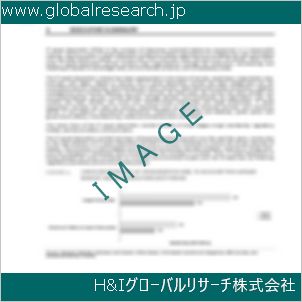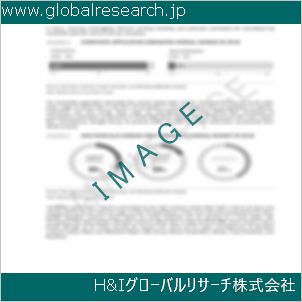Table of Contents
1 Industry Overview of Aluminiumcarbide
1.1 Definition and Specifications of Aluminiumcarbide
1.1.1 Definition of Aluminiumcarbide
1.1.2 Specifications of Aluminiumcarbide
1.2 Classification of Aluminiumcarbide
1.3 Applications of Aluminiumcarbide
1.3.1 Nuclear Application
1.3.2 Non-Nuclear Application
1.4 Industry Chain Structure of Aluminiumcarbide
1.5 Industry Overview and Major Regions Status of Aluminiumcarbide
1.5.1 Industry Overview of Aluminiumcarbide
1.5.2 Global Major Regions Status of Aluminiumcarbide
1.6 Industry Policy Analysis of Aluminiumcarbide
1.7 Industry News Analysis of Aluminiumcarbide
2 Manufacturing Cost Structure Analysis of Aluminiumcarbide
2.1 Raw Material Suppliers and Price Analysis of Aluminiumcarbide
2.2 Equipment Suppliers and Price Analysis of Aluminiumcarbide
2.3 Labor Cost Analysis of Aluminiumcarbide
2.4 Other Costs Analysis of Aluminiumcarbide
2.5 Manufacturing Cost Structure Analysis of Aluminiumcarbide
2.6 Manufacturing Process Analysis of Aluminiumcarbide
3 Technical Data and Manufacturing Plants Analysis of Aluminiumcarbide
3.1 Capacity and Commercial Production Date of Global Aluminiumcarbide Major Manufacturers in 2023
3.2 Manufacturing Plants Distribution of Global Aluminiumcarbide Major Manufacturers in 2023
3.3 R&D Status and Technology Source of Global Aluminiumcarbide Major Manufacturers in 2023
3.4 Raw Materials Sources Analysis of Global Aluminiumcarbide Major Manufacturers in 2023
4 Capacity, Production and Revenue Analysis of Aluminiumcarbide by Regions, Types and Manufacturers
4.1 Global Capacity, Production and Revenue of Aluminiumcarbide by Regions 2019-2024
4.2 Global and Major Regions Capacity, Production, Revenue and Growth Rate of Aluminiumcarbide 2019-2024
4.3 Global Capacity, Production and Revenue of Aluminiumcarbide by Types 2019-2024
4.4 Global Capacity, Production and Revenue of Aluminiumcarbide by Manufacturers 2019-2024
5 Price, Cost, Gross and Gross Margin Analysis of Aluminiumcarbide by Regions, Types and Manufacturers
5.1 Price, Cost, Gross and Gross Margin Analysis of Aluminiumcarbide by Regions 2019-2024
5.2 Price, Cost, Gross and Gross Margin Analysis of Aluminiumcarbide by Types 2019-2024
5.3 Price, Cost, Gross and Gross Margin Analysis of Aluminiumcarbide by Manufacturers 2019-2024
6 Consumption Volume, Consumption Value and Sale Price Analysis of Aluminiumcarbide by Regions, Types and Applications
6.1 Global Consumption Volume and Consumption Value of Aluminiumcarbide by Regions 2019-2024
6.2 Global and Major Regions Consumption Volume, Consumption Value and Growth Rate of Aluminiumcarbide 2019-2024
6.3 Global Consumption Volume and Consumption Value of Aluminiumcarbide by Types 2019-2024
6.4 Global Consumption Volume and Consumption Value of Aluminiumcarbide by Applications 2019-2024
6.5 Sale Price of Aluminiumcarbide by Regions 2019-2024
6.6 Sale Price of Aluminiumcarbide by Types 2019-2024
6.7 Sale Price of Aluminiumcarbide by Applications 2019-2024
6.8 Market Share Analysis of Aluminiumcarbide by Different Sale Price Levels
7 Supply, Import, Export and Consumption Analysis of Aluminiumcarbide
7.1 Supply, Consumption and Gap of Aluminiumcarbide 2019-2024
7.2 Global Capacity, Production, Price, Cost, Revenue, Supply, Import, Export and Consumption of Aluminiumcarbide 2019-2024
7.3 USA Capacity, Production, Price, Cost, Revenue, Supply, Import, Export and Consumption of Aluminiumcarbide 2019-2024
7.4 EU Capacity, Production, Price, Cost, Revenue, Supply, Import, Export and Consumption of Aluminiumcarbide 2019-2024
7.5 China Capacity, Production, Price, Cost, Revenue, Supply, Import, Export and Consumption of Aluminiumcarbide 2019-2024
7.6 Japan Capacity, Production, Price, Cost, Revenue, Supply, Import, Export and Consumption of Aluminiumcarbide 2019-2024
8 Major Manufacturers Analysis of Aluminiumcarbide
8.1 Manufacturer One
8.1.1 Company Profile
8.1.2 Product Picture and Specifications
8.1.2.1 Type I
8.1.2.2 Type II
8.1.2.3 Type III
8.1.3 Capacity, Production, Price, Cost, Gross and Revenue
8.1.4 Contact Information
8.2 Manufacturer Two
8.2.1 Company Profile
8.2.2 Product Picture and Specifications
8.2.2.1 Type I
8.2.2.2 Type II
8.2.2.3 Type III
8.2.3 Capacity, Production, Price, Cost, Gross and Revenue
8.2.4 Contact Information
8.3 Manufacturer Three
8.3.1 Company Profile
8.3.2 Product Picture and Specifications
8.3.2.1 Type I
8.3.2.2 Type II
8.3.2.3 Type III
8.3.3 Capacity, Production, Price, Cost, Gross and Revenue
8.3.4 Contact Information
8.4 Manufacturer Four
8.4.1 Company Profile
8.4.2 Product Picture and Specifications
8.4.2.1 Type I
8.4.2.2 Type II
8.4.2.3 Type III
8.4.3 Capacity, Production, Price, Cost, Gross and Revenue
8.4.4 Contact Information
8.5 Manufacturer Five
8.5.1 Company Profile
8.5.2 Product Picture and Specifications
8.5.2.1 Type I
8.5.2.2 Type II
8.5.2.3 Type III
8.5.3 Capacity, Production, Price, Cost, Gross and Revenue
8.5.4 Contact Information
…
9 Marketing Trader or Distributor Analysis of Aluminiumcarbide
9.1 Marketing Channels Status of Aluminiumcarbide
9.2 Traders or Distributors with Contact Information of Aluminiumcarbide by Regions
9.3 Ex-work Price, Channel Price and End Buyer Price Analysis of Aluminiumcarbide
9.4 Regional Import, Export and Trade Analysis of Aluminiumcarbide
10 Industry Chain Analysis of Aluminiumcarbide
10.1 Upstream Major Raw Materials Suppliers Analysis of Aluminiumcarbide
10.1.1 Major Raw Materials Suppliers with Contact Information Analysis of Aluminiumcarbide
10.1.2 Major Raw Materials Suppliers with Supply Volume Analysis of Aluminiumcarbide by Regions
10.2 Upstream Major Equipment Suppliers Analysis of Aluminiumcarbide
10.2.1 Major Equipment Suppliers with Contact Information Analysis of Aluminiumcarbide
10.2.2 Major Equipment Suppliers with Product Pictures Analysis of Aluminiumcarbide by Regions
10.3 Downstream Major Consumers Analysis of Aluminiumcarbide
10.3.1 Major Consumers with Contact Information Analysis of Aluminiumcarbide
10.3.2 Major Consumers with Consumption Volume Analysis of Aluminiumcarbide by Regions
10.4 Supply Chain Relationship Analysis of Aluminiumcarbide
11 Development Trend of Analysis of Aluminiumcarbide
11.1 Capacity, Production and Revenue Forecast of Aluminiumcarbide by Regions and Types
11.1.1 Global Capacity, Production and Revenue of Aluminiumcarbide by Regions 2024-2029
11.1.2 Global and Major Regions Capacity, Production, Revenue and Growth Rate of Aluminiumcarbide 2024-2029
11.1.3 Global Capacity, Production and Revenue of Aluminiumcarbide by Types 2024-2029
11.2 Consumption Volume and Consumption Value Forecast of Aluminiumcarbide by Regions, Types and Applications
11.2.1 Global Consumption Volume and Consumption Value of Aluminiumcarbide by Regions 2024-2029
11.2.2 Global and Major Regions Consumption Volume, Consumption Value and Growth Rate of Aluminiumcarbide 2024-2029
11.2.3 Global Consumption Volume and Consumption Value of Aluminiumcarbide by Types 2024-2029
11.2.4 Global Consumption Volume and Consumption Value of Aluminiumcarbide by Applications 2024-2029
11.3 Supply, Import, Export and Consumption Forecast of Aluminiumcarbide
11.3.1 Supply, Consumption and Gap of Aluminiumcarbide 2024-2029
11.3.2 Global Capacity, Production, Price, Cost, Revenue, Supply, Import, Export and Consumption of Aluminiumcarbide 2024-2029
11.3.3 USA Capacity, Production, Price, Cost, Revenue, Supply, Import, Export and Consumption of Aluminiumcarbide 2024-2029
11.3.4 EU Capacity, Production, Price, Cost, Revenue, Supply, Import, Export and Consumption of Aluminiumcarbide 2024-2029
11.3.5 China Capacity, Production, Price, Cost, Revenue, Supply, Import, Export and Consumption of Aluminiumcarbide 2024-2029
11.3.6 Japan Capacity, Production, Price, Cost, Revenue, Supply, Import, Export and Consumption of Aluminiumcarbide 2024-2029
12 New Project Investment Feasibility Analysis of Aluminiumcarbide
12.1 New Project SWOT Analysis of Aluminiumcarbide
12.2 New Project Investment Feasibility Analysis of Aluminiumcarbide
13 Conclusion of the Global Aluminiumcarbide (CAS 1299-86-1) Industry 2024 Market Research Report
| ※参考情報 炭化アルミニウム(Aluminium carbide、CAS番号 1299-86-1)は、アルミニウムと炭素からなる化合物であり、化学式は Al4C3 で示されます。この化合物は、通常は白色から灰色の粉末として存在し、高い融点や硬度を持つことから多くの産業において利用されています。以下では、炭化アルミニウムの定義や特徴、種類、用途、関連技術などについて詳しく説明いたします。 炭化アルミニウムは、よく知られている金属の一つであるアルミニウムと炭素が結合した結果得られる化合物で、主に高温における耐熱材料としての性質が注目されています。炭化アルミニウムは、通常、アルミニウムと炭素の反応によって合成されます。この反応は、高温環境下で行われることが一般的です。 炭化アルミニウムの特徴としては、まず非常に高い融点(約 2100 ℃)があります。このため、熱的に安定した材料として高温での用途に適しています。また、硬度が高く、機械的特性も優れていることから、耐摩耗性が求められるアプリケーションでも利用されています。さらに、炭化アルミニウムは、電気伝導性を持ち、半導体技術や電子機器の分野でも潜在的な利用価値があります。 炭化アルミニウムには、いくつかの種類が存在しますが、主要なものとしては、単結晶と多結晶の二つがあります。単結晶は、特定の結晶構造を持ち、物理的性質が均一であるため、高級な電子デバイスや光学材料に利用されることがあります。一方、多結晶は、複数の結晶が集合した構造を持ち、耐摩耗性や耐腐食性が求められる分野で広く利用されることが多いです。 炭化アルミニウムの用途は多岐にわたります。まず、耐熱材料としての利用があります。航空宇宙産業やエネルギー産業において、高温環境下での材料として不可欠です。また、鋳造業界でも、炭化アルミニウムは鋳型の材料として利用されており、金属加工において重要な役割を果たしています。さらに、研磨剤やセラミックスとしても利用されることがあり、高硬度を活かして様々な素材の表面処理に使用されています。 また、炭化アルミニウムは、セラミックス嫌気性合成材料の一部としても注目されています。この分野では、材料の均一性や強度向上が求められ、炭化アルミニウムはその特性を利用して、強靭なセラミックスを形成するための基礎素材となることが期待されています。 加えて、炭化アルミニウムは特定の化学反応において触媒としての役割を果たすこともあります。特に、メタン生成過程やガス分解反応において、その特性が活用されています。これによって、環境に優しいエネルギーソリューションの研究と発展が促進されることが期待されています。 最近の研究では、ナノ炭化アルミニウムの合成や利用についても注目が集まっています。ナノサイズの炭化アルミニウムは、表面積が大きくなり、従来のバルク材料に比べて異なる物理的・化学的特性を持つため、様々な新しい応用が見込まれています。 炭化アルミニウムに関連する技術も発展してきています。例えば、炭化アルミニウムの合成方法には、CVD(Chemical Vapor Deposition)やPVD(Physical Vapor Deposition)などの薄膜技術が含まれています。また、高温超伝導体や次世代のエネルギー材料の開発にも炭化アルミニウムの特性が重要な役割を果たすと考えられています。 さらに、炭化アルミニウムは環境技術にも利用される可能性があります。リサイクル技術や廃棄物処理分野において、その特性を活かした新しい素材の開発が進んでいます。特に、産業廃棄物を利用した炭化アルミニウムの生成が期待されており、循環型社会の構築に向けた取り組みの一環として注目されています。 最後に、炭化アルミニウムはその特殊な特性から、未来の技術や材料開発において重要な役割を果たすことが予想されます。今後も新たな研究が進み、多様な分野での応用が期待される化合物であると言えるでしょう。炭化アルミニウムの特性を更に理解し、利用方法を探ることで、持続可能な社会に向けた新しい技術の創出が可能となることを願っています。 |
❖ 免責事項 ❖
http://www.globalresearch.jp/disclaimer












